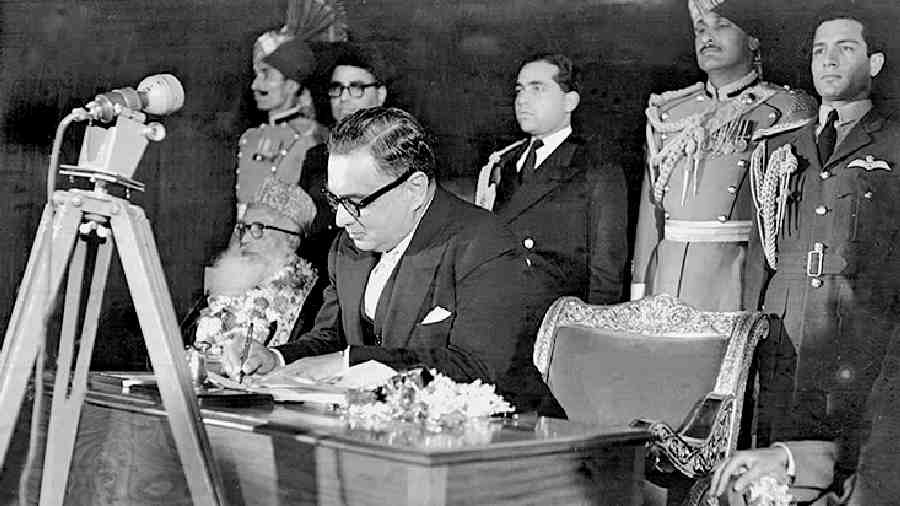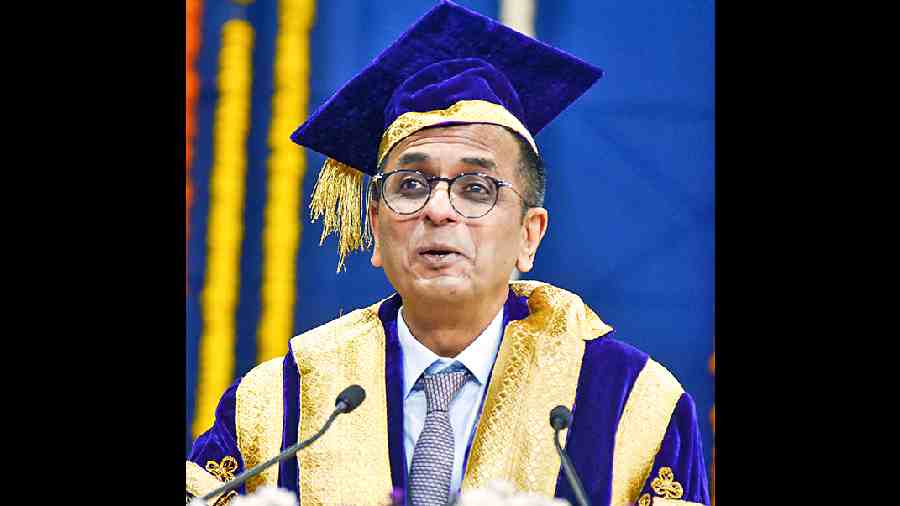A few relatives of Iskander Ali Mirza, who was born in Murshidabad in 1899 and became the first President of Pakistan, have recently petitioned the Union home ministry staking claim to his property in the Bengal district that got vested with the government as enemy property in 1968.
A senior official at the Custodian of Enemy Property for India, a home ministry wing, confirmed receiving two petitions from Mirza’s Indian descendants that have questioned the rationale behind the 34 acres of prime land in Lalbag, Murshidabad, being classified as enemy property.
A land broker in Murshidabad said a 34-acre plot can fetch at least Rs 50 crore in the market.
“They (the relatives) have claimed to be legal heirs of Fateh Ali Mirza, father of Iskander Mirza. They have given representations under Section 18 of the Enemy Property Act, 1968, for the property to be divested with them,” the government official said.
Although Iskander moved to Pakistan after Independence and became President in 1956, Fateh — a direct descendant of Mir Jafar, the first dependent Nawab of Bengal under the British East India Company — continued living in India.
“The petitions are from Asfaqul Haque and Farzana Kazim. Their contention is that as Fateh Ali lived in India, his property cannot be called enemy property. Their plea is under consideration,” the official said.
Properties left behind by Pakistani nationals were vested with the Indian government after the India-Pakistan war of 1965.
Similarly, movable and immovable properties belonging to Chinese nationals got vested with the Centre after the 1962 war with China.
Many Chinese, including owners of several popular eateries in Calcutta, were interned in the Deoli camp in Rajasthan during the war and its aftermath.
Eventually, Parliament promulgated the 1968 act to enable and regulate the appropriation of properties owned in India by Pakistanis and Chinese.
In 2017, the act was amended so that “no civil court or authority has jurisdiction on enemy property”, the official said.
“The representation has to be made with the home ministry and after that one can approach the high court and go up to the Supreme Court in appeal,” he added.
However, several of Fateh Ali’s relatives had in the years between 1968 and 2017 moved lower courts staking claim to the Lalbag land, as had the purported heirs of many former owners of other enemy properties.
Among these was a court case that Fateh’s daughter Qamar Taz Mirza filed half a century ago and which her grandson Safdar Mirza continued fighting.
Since 2017, the home ministry has been able to get many of the cases closed by citing the amendment to the law although some cases, with their hearings often fixed years apart, continue.
Following this, the ministry has received several petitions from descendants of former owners of enemy property — such as Asfaqul and Farzana — seeking divestment of the assets in their favour.
However, there has not been any favourable order till now, officials said.
They said that 10 such petitions pertained to the jurisdiction of the Calcutta branch of the ministry.
As Fateh Ali’s descendants await a miracle, the Centre has begun a nationwide survey by geo-tagging immovable enemy properties with GPS data.
The objective is to preserve them and monetise some of them, hoping to generate about Rs 1 lakh crore for the exchequer.
The survey, under the aegis of the Defence Estate Directorate and Custodian of Enemy Property for India, is under way in Bihar and Uttar Pradesh and has neared completion in Delhi.
It is likely to begin in Bengal very soon. Of the 4,344-odd vested enemy properties in Bengal, at least 1,728 are in Murshidabad and include mango orchards, large ponds and agricultural land. Some 51 of these enemy properties belonged to Chinese nationals, and most of them are in Calcutta or north Bengal.
Recently, the Tripura government identified around 5,000 properties as suspected enemy property. They are under verification. Over the past few years, the central government has earned around Rs 3,400 crore by disposing of movable enemy properties, including gold and shares.
The Centre is keen on launching the process for the monetisation of immovable assets after the survey. The exercise will be difficult since most of the immovable properties are entangled in litigation or encroachment. Some of the properties, especially prime land, have gone into the hands of land sharks courtesy corrupt officials, who are under the scanner of various government agencies.
“In the first phase, 26 encumbrance-free immovable properties will be monetised, and two of them are in Bengal,” a source said.
Claimants like the descendants of Fateh Ali Mirza are worried that the completion of the monetisation process would end their chances.
They have for years lived with the hope of implementation of the Tashkent Declaration of 1966, signed after the 1965 war, in which India and Pakistan promised to negotiate the possible return of assets taken over by either side after the war.
Pakistan has ignored the declaration and disposed of most of the enemy property but India has preserved the assets, giving a glimmer of hope to the legal heirs to the properties.
“All my life, I have lived with the hope that we would be able to lay claim to the estate of my great-grandfather Fateh Ali,” Safdar Mirza, 70, told The Telegraph.
“My grandmother (Qamar Taz) began the process but died long ago. I am old and a heart patient, and don’t know how long I can wait.”











